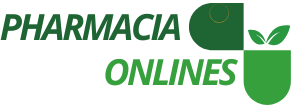Introduction
Nanotechnology has become one of the most groundbreaking innovations in modern science, and its application in pharmaceutical research and development is transforming the way we approach drug delivery systems. The ability to manipulate matter at the nanoscale has led to the creation of drug delivery methods that are more targeted, efficient, and capable of overcoming barriers that were once considered insurmountable.
Body
1. What is Nanotechnology in Pharmaceuticals?
Nanotechnology involves the use of nanoscale materials (1–100 nanometers) to perform specific functions. In pharmaceuticals, these nanoparticles can be used to carry drugs, enhance solubility, improve stability, and target specific cells or tissues. The core idea behind nanotechnology in drug delivery is to increase the efficacy of the drug while minimizing side effects.
2. Applications of Nanotechnology in Drug Delivery
A. Targeted Drug Delivery
Traditional drug delivery systems often lack the precision to target diseased cells specifically. Nanoparticles can be designed to target certain cells or tissues, thus ensuring that the drug reaches its intended site with minimal impact on healthy cells. For example, liposomes and polymeric nanoparticles are used to deliver chemotherapy drugs directly to cancer cells, reducing the toxic effects on the rest of the body.
B. Controlled Drug Release
One of the key advantages of nanotechnology is the ability to control the release of drugs over time. This ensures that the drug is delivered in the right dosage at the right time, enhancing therapeutic outcomes and reducing the need for frequent dosing.
C. Improving Drug Solubility
Many drugs suffer from poor water solubility, making them difficult for the body to absorb. Nanoparticles can be engineered to improve the solubility and bioavailability of these drugs, making treatments more effective for conditions like cardiovascular disease and diabetes.
3. Types of Nanoparticles in Drug Delivery
A. Liposomes
These are spherical vesicles that can encapsulate drugs, protecting them from degradation and increasing their half-life in the bloodstream. Liposomal formulations are already being used in the treatment of various cancers and fungal infections.
B. Polymeric Nanoparticles
Polymeric nanoparticles are highly versatile and can be engineered to carry drugs to specific sites in the body. They are especially useful in treating chronic conditions where long-term drug release is needed.
C. Dendrimers
Dendrimers are branched molecules with a high degree of surface functionality. They can be used for targeted drug delivery by attaching ligands that recognize specific cellular receptors.
D. Nanocrystals
Nanocrystals are used to improve the solubility of poorly soluble drugs. By reducing particle size to the nanoscale, the surface area is increased, allowing for better absorption and faster action.
4. Nanotechnology and Cancer Treatment
Cancer treatment is one of the most prominent areas where nanotechnology has shown great promise. Traditional chemotherapy affects both cancerous and healthy cells, leading to severe side effects. Nanoparticles allow for the delivery of drugs specifically to tumor cells, thereby reducing the impact on healthy tissue. Nanoparticles can also be used to deliver multiple drugs at once, attacking the cancer from different angles.
5. Challenges and Ethical Considerations
While nanotechnology holds great promise, there are several challenges that need to be addressed:
- Safety Concerns: The long-term safety of nanoparticles in the human body is still under investigation. Some studies have raised concerns about the potential toxicity of certain nanoparticles.
- Regulatory Challenges: Regulatory bodies are still catching up with the rapid pace of innovation in nanotechnology. There are currently no standardized guidelines for the approval of nanomedicines, which can slow down their availability.
- Cost: Developing nanomedicines is expensive, and there is a need for cost-effective manufacturing techniques to make them accessible to a wider population.
6. Future Prospects
The future of nanotechnology in pharmaceuticals is bright. Advances in materials science, biotechnology, and medicine are likely to lead to the development of even more sophisticated nanomedicines. Personalized medicine, where treatments are tailored to the genetic makeup of individual patients, could also benefit from nanotechnology by allowing for highly specific drug delivery systems.
Conclusion
Nanotechnology in drug delivery is revolutionizing the pharmaceutical industry by providing more effective, targeted, and safer treatments for various diseases. Despite the challenges that remain, the potential benefits far outweigh the risks. As research continues, nanomedicines are expected to become a vital component of modern healthcare, improving outcomes for patients around the world.
References:
- Nanoparticulate Drug Delivery Systems by Deepak Thassu, Michel Deleers, and Yashwant Pathak.
- Nanotechnology in Drug Delivery: Fundamentals, Design, and Applications edited by S. Thomas, Y. Grohens, and N. Ninan.
- Panyam, J., & Labhasetwar, V. (2003). Biodegradable nanoparticles for drug and gene delivery to cells and tissue. Advanced Drug Delivery Reviews, 55(3), 329-347.
- Ferrari, M. (2005). Cancer nanotechnology: opportunities and challenges. Nature Reviews Cancer, 5(3), 161-171.
This topic should align with SEO best practices and attract a wide audience interested in cutting-edge pharmaceutical innovations. Let me know if you need adjustments!

